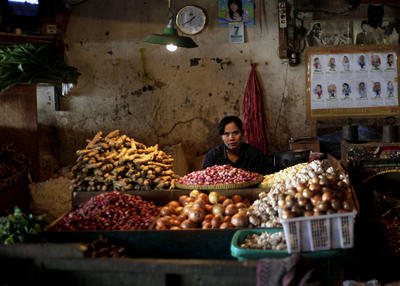This had an adverse effect on some sectors, including agriculture, construction and trade.
Growth for the whole of 2010 is forecast to range between 6.0 per cent to 6.3 per cent, compared with 4.5 per cent in 2009 and 6.1 per cent in 2008. These figures indicate that the Indonesian economy has successfully weathered the Global Financial Crisis (GFC). The higher growth in 2010 is supported by strong growth in consumption, investment, and exports, which is estimated to be sustained in 2011. For 2011 the Indonesian economy is forecast to grow at 6.0 per cent to 6.5 per cent, and at 6.1 per cent to 6.6 per cent in 2012.
Although there has been increased inflationary pressure in recent months, Bank Indonesia has managed to control inflation at a manageable level, with the latest CPI inflation in November 2010 reaching 0.6 per cent (mtm) or 6.3 per cent (yoy), slightly higher than in October 2010. Inflation during 2010 is likely to be higher than the target corridor of 5+ or – per cent . The higher inflation during 2010 is mostly due to the volatile food prices and the administered prices, but core inflation may be lower than the historical level. In 2011 inflation is estimated to be 5 + or – 1 per cent.
On the fiscal side, Indonesia has continued to pursue a prudent fiscal policy in 2010, with a strong commitment to fiscal consolidation, aimed at continuing declining public debt to GDP ratio, diversification of the government debt portfolio, and reduced reliance on funding from the international capital market.
Investment has been growing strongly throughout 2010 due to the improved investment climate and the nascent global recovery. Exports have remained high, although it grew at a slower rate (13.4 per cent) than imports (15.2 per cent). The balance of payment’s current account in the third quarter of 2010 recorded a surplus of about US$1.3 billion due to the good performance in the non-oil and gas trade balance, the gas trade balance, and current transfers. This current account surplus was less than the surplus of US$1.8 billion in the second quarter due to higher deficits in the services and income accounts.
The capital and financial account during the third quarter of 2010 recorded a surplus of US$6.5 billion, an increase from the US$4.4 billion surplus in the second quarter of 2010. These surpluses are due to inflows of foreign direct investment (FDI) and particularly to vast inflows of portfolio investment. The surge in portfolio investment is due to excess liquidity in the global financial markets, the uncertain economic prospects in the US and the European Union, and the more attractive returns on investment in Indonesia. The increased FDI inflows are due to an improvement in Indonesia’s investment climate and the stable macroeconomic conditions.
In 2011 Bank Indonesia has to remain vigilant to the following challenges: increased inflationary pressure; the adverse impact of massive portfolio capital inflows; and excess domestic liquidity. To deal with these risks, Bank Indonesia will implement a mix of monetary and macro prudential policies.
Looking further ahead, one of the major challenges facing the Indonesian economy in the near future is the continued weak performance of the manufacturing sector which after the Asian financial crisis has been growing at low single digit rates. In contrast, during the three decades of the Soeharto era, Indonesia’s manufacturing sector recorded a double digit growth. In fact, after the Asian financial crisis the tradeables sector (agriculture, mining and manufacturing) recorded a much slower growth than the non-tradeables sector. This development is worrying, as employment opportunities are generated to a much greater extent in the tradeables sector, particularly the manufacturing sector. Greater employment opportunities in manufacturing are also a good way to reduce absolute poverty, as the recent experience of China has indicated.
Indonesia is a resource-rich country, and in recent years it has mostly relied on the exports of primary commodities, just like it had during the Dutch colonial period. This reliance was stimulated by rising commodity prices, driven by the voracious demand of Asia’s two rapidly growing economies of China and India, particularly for crude palm oil, coal, copper and rubber. Indonesia thus appears to suffer from the ‘resource curse,’ unable to diversify its economy away from its reliance on primary exports. Nor, unfortunately, has the Indonesian government thus far made clear how it will or can escape from this curse.
Thee Kian Wie is a senior economist at the Indonesian Institute of Sciences (LIPI) in Jakarta.
This is part of the special feature: 2010 in review and the year ahead.

